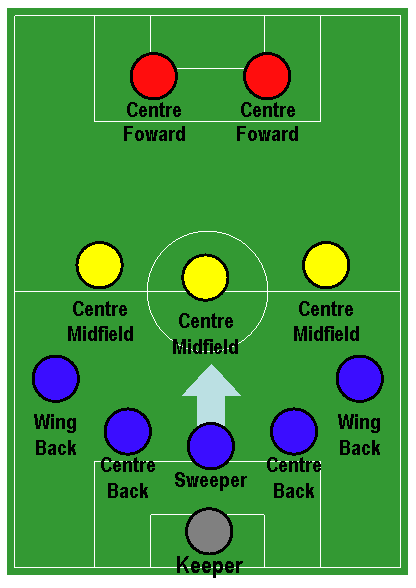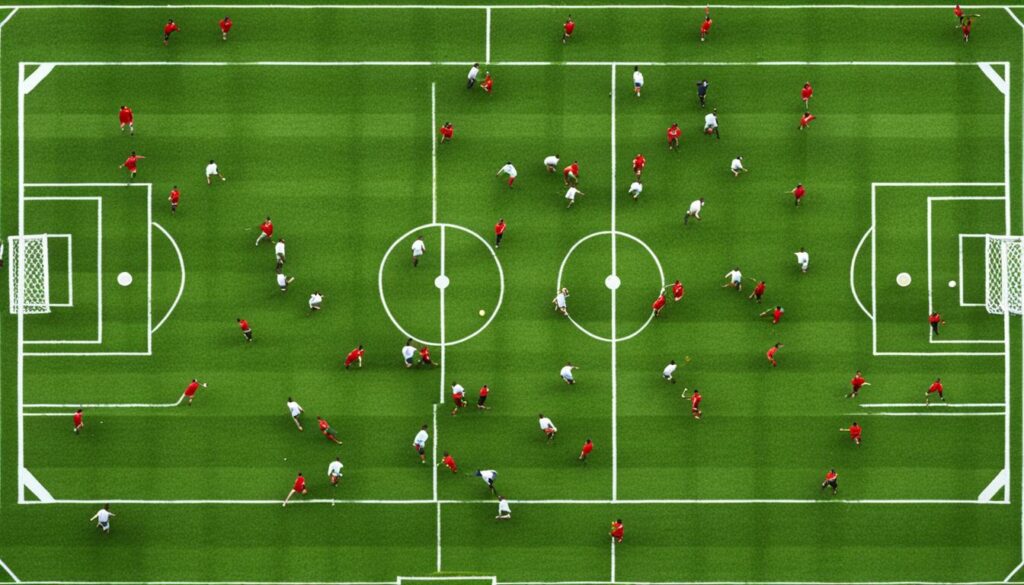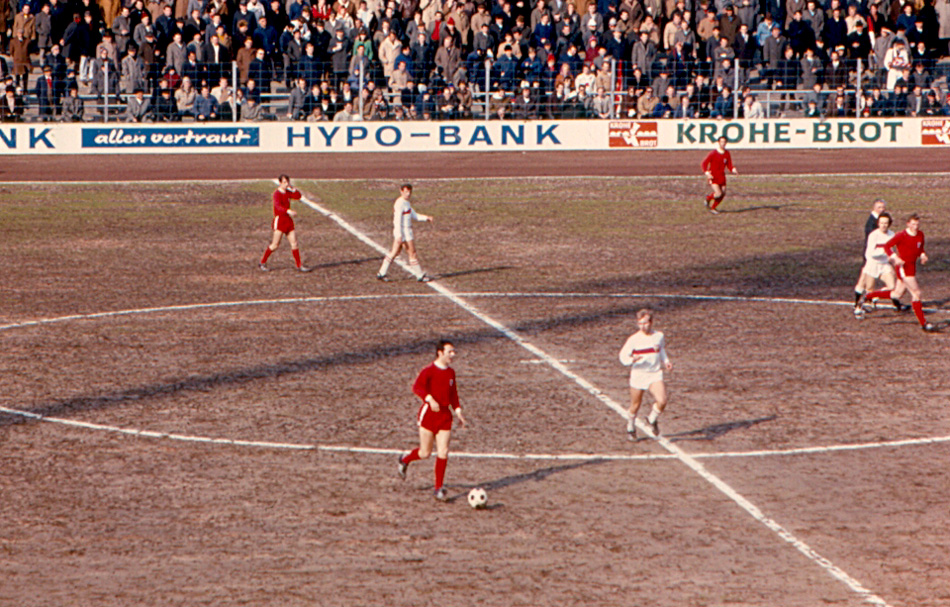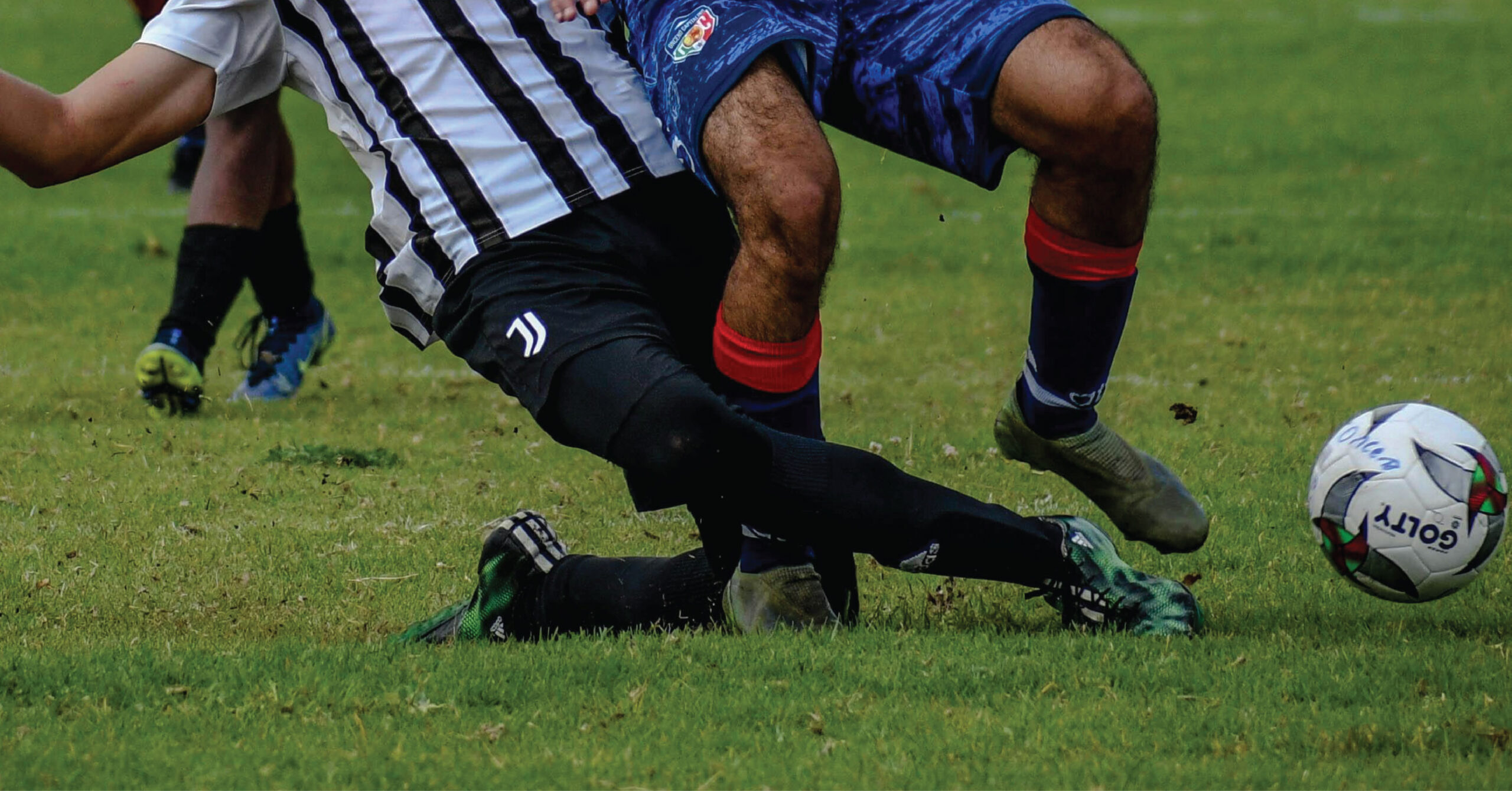The sweeper position in
What is a sweeper in soccer? Key Takeaways:
- The sweeper is commonly used in youth, amateur, and college
soccer . - A sweeper plays as the last defender and covers the space behind the defensive line.
- The sweeper’s role is to prevent goalscoring opportunities and provide defensive stability.
- Sweepers can also contribute to midfield play when their team has possession of the ball.
- The sweeper position has evolved over time and is less prevalent in professional
soccer .
The Role of the Sweeper Soccer Position
In
While the sweeper’s main focus is on defense, they also contribute to the team’s attacking play. They have the ability to move into midfield areas when their team is in possession of the ball, providing an additional passing option and support. Their strong aerial ability can be utilized to win headers and provide an attacking threat in the opponent’s penalty box. However, it’s important for the sweeper to remain alert and ready to prevent quick counter-attacks in case of a loss of possession.

To summarize, the sweeper soccer position is a vital position that combines defensive prowess with tactical awareness. They play a key role in preventing goals and organizing the defense, while also contributing to the team’s attacking play. The sweeper’s responsibilities and contributions make them an integral part of a team’s overall strategy and success.
The Role of the Sweeper in Soccer – Responsibilities
When it comes to the sweeper position in
- Being the last line of defense and preventing goalscoring opportunities
- Covering the space behind the defensive line and sweeping up any attacks
- Organizing and communicating with fellow defenders for effective marking and positioning
- Contributing to the team’s attacking play by moving into midfield areas
- Providing an additional passing option and support to the team
- Utilizing their strong aerial ability to win headers and provide an attacking threat
These responsibilities make the sweeper position a crucial component of a team’s defensive and offensive strategy. Their ability to read the game, communicate effectively, and contribute on both ends of the field makes them a valuable asset to any team.
Comparing the Sweeper to Other Defensive Positions
While the role of the sweeper in
| Sweeper | Center-back | Defensive Midfielder | |
|---|---|---|---|
| Primary Role | Prevent goalscoring opportunities and sweep up attacks | Mark opposing attackers and intercept passes | Shield the defense, disrupt opposing attacks, and initiate counter-attacks |
| Positioning | Behind the defensive line, last line of defense | In the central defense, alongside other defenders | In front of the defense, acting as a shield |
| Communication | Organizes and communicates with fellow defenders | Coordinates with other defenders and midfielders | Coordinates with all teammates, including defenders and attackers |
| Attacking Contribution | Moves into midfield areas, provides passing options | Provides support in attacking set-pieces | Initiates attacks, distributes the ball, and supports the midfield and attack |
As the table shows, while there may be some overlap in responsibilities, each position has its own distinct role and focus within the team’s defensive structure. The sweeper’s role as the last line of defense and their ability to read the game make them unique in their responsibilities and contributions to the team’s overall performance.
Use of the Sweeper in Soccer Teams
While the sweeper position is rarely seen in modern professional
Sweepers are typically deployed in formations where a dedicated player can cover the space behind the defensive line effectively. This allows the other defenders to focus on marking and pressing the opposition’s attacking players. By having a sweeper, teams can ensure greater defensive stability and minimize the risk of conceding goals. Additionally, the sweeper’s ability to read the game and provide cover can be instrumental in counter-attacking situations.
While some teams prefer to adopt a more modern approach and rely on a flat defensive line without a sweeper, others still recognize the benefits of having a player in that position. The use of a sweeper allows for more flexibility in defensive positioning and can be particularly effective against teams with fast and skillful forward players. In such cases, the sweeper can act as a safety net, preventing through balls and nullifying the opponent’s attacking threat.
| Pros of Using a Sweeper in | Cons of Using a Sweeper in |
|---|---|
|
|
Formations that Utilize a Sweeper in Soccer
The sweeper position can be found in various
4-4-2 Formation
The 4-4-2 formation is a classic setup that includes four defenders, four midfielders, and two forwards. In this formation, the sweeper plays as the central defender, positioned just behind the rest of the defensive line. The sweeper’s role is crucial in providing cover and protecting the goal, as well as organizing the defense.
4-3-3 Formation
The 4-3-3 formation is an attacking setup that consists of four defenders, three midfielders, and three forwards. In this formation, the sweeper plays a similar role to the 4-4-2 formation, providing defensive support and covering the space behind the defensive line. However, due to the emphasis on attacking play, the sweeper in a 4-3-3 formation may have more opportunities to contribute in the midfield and join the team’s attacking movements.
3-5-2 Formation
The 3-5-2 formation is another formation that historically utilized a sweeper. In this setup, there are three defenders, five midfielders, and two forwards. The sweeper in a 3-5-2 formation plays a key role in organizing the defense and covering the space left by the wing-backs, who often push forward to provide width in the attack.
While these formations are common examples of how a sweeper can be utilized, it’s important to note that the choice of formation depends on the team’s tactics, playing style, and the opposition they are facing. The position of the sweeper within the formation allows for greater defensive coverage and tactical flexibility, contributing to a team’s overall defensive stability.
| Formation | Defenders | Midfielders | Forwards |
|---|---|---|---|
| 4-4-2 | 4 | 4 | 2 |
| 4-3-3 | 4 | 3 | 3 |
| 3-5-2 | 3 | 5 | 2 |
Qualities of a Good Sweeper in Soccer
The sweeper position in
Heading ability is another essential quality for a sweeper. They need to be proficient at winning aerial duels and clearing the ball out of danger. This skill is particularly important when defending against long balls or set pieces.
Effective communication is paramount for a sweeper. As the last line of defense, they must organize and direct their fellow defenders, ensuring proper marking, positioning, and defensive shape. This communication helps maintain a cohesive defensive unit and minimizes the risk of defensive errors.
Key Qualities of a Good Sweeper:
- High
soccer IQ and game reading ability - Good heading ability
- Effective communication skills
- Confidence in 1v1 duels
- Accurate passing over short and long distances
A quality sweeper must also be confident in 1v1 situations. They should possess the ability to win individual battles against opposing attackers, using well-timed tackles and challenges to regain possession. This defensive prowess is essential in preventing goalscoring opportunities and maintaining defensive solidity.
Furthermore, a sweeper’s passing ability is crucial for both defensive and offensive aspects of the game. They should have a high pass completion rate and be able to make accurate passes over both short and long distances. This passing proficiency allows them to initiate attacks from deep positions and contribute to their team’s build-up play.
Overall, a good sweeper combines technical skills, tactical understanding, and effective communication to excel in their role. Their ability to read the game, win aerial battles, organize the defense, and make accurate passes makes them an invaluable asset to any team.
Defensive Responsibilities of a Sweeper in Soccer
A sweeper in
One of the primary responsibilities of a sweeper is to provide cover and support to the other defenders. They must be constantly aware of the positioning of their teammates and communicate effectively to ensure that all attacking players are marked and the goal is protected. This requires strong organizational skills and the ability to make split-second decisions to react to the movement of the opposition.
Sweepers are also expected to excel in 1v1 duels, using their timing and positioning to win tackles and challenges. In the penalty area, they must be prepared to block shots and put their body on the line to prevent the opposition from scoring. It is crucial for a sweeper to have the physicality and determination to win the ball and maintain defensive solidity.

Table: Sweeper’s Attacking Contributions
| Attacking Contribution | Description |
|---|---|
| Deep Passing Option | Sweepers can receive the ball deep and distribute it to start attacks. |
| Build-up Play | They act as a link between the defense and midfield, contributing to possession and the team’s control of the game. |
| Aerial Threat | Sweepers can use their height and heading ability to pose a threat in the opponent’s penalty box during set pieces. |
While a sweeper’s attacking contributions may not be as prominent as those of forwards or midfielders, their ability to contribute offensively adds an extra dimension to the team’s overall gameplay. By combining defensive solidity with offensive support, sweepers play a crucial role in the team’s tactical approach and enhance their chances of success.
The Best Sweepers of All Time
Throughout the history of
Ronald Koeman
Ronaldo Koeman, the former Dutch international, is widely regarded as one of the greatest sweepers to have graced the game. Known for his technical prowess, leadership, and goal-scoring ability, Koeman played a key role in the legendary Barcelona “Dream Team” of the mid-1990s. During his time at Barcelona, he showcased his exceptional defensive skills while also contributing with crucial goals from set-pieces.
Franz Beckenbauer
Franz Beckenbauer is often hailed as one of the finest sweepers in the history of

Bobby Moore
Bobby Moore, the iconic English defender, is celebrated for his defensive prowess and composure on the ball. As the captain of the England national team that won the 1966 World Cup, Moore showcased his exceptional defensive skills against some of the best attacking players in the world. Known for his ability to win the ball off opponents while maintaining possession, Moore played a crucial role in England’s triumph and solidified his place as one of the best sweepers in
These are just a few examples of the best sweepers in
The Evolution of the Sweeper
The game of
As teams have developed new strategies and tactics, the need for a dedicated sweeper position has diminished. Instead, the responsibilities traditionally associated with the sweeper are often fulfilled by other players, such as center-backs or central defensive midfielders. This allows for greater flexibility in defensive formations and allows teams to adapt to different opposition and playing styles.
Furthermore, the evolution of formations has also played a role in the decline of the sweeper position. Modern formations like the 4-4-2 or 4-3-3 often utilize multiple defenders in the last line, distributing defensive responsibilities more evenly among the players. This shift in formation has made the specific role of a sweeper less necessary.
| Traditional | Modern |
|---|---|
| Sweeper | Center-back, Central defensive midfielder |
| Stopper | Center-back |
| Wingback | Full-back |
The evolution of
The Sweeper vs Stopper Debate
In modern
When it comes to the sweeper position, their primary focus is to cover the space behind the defensive line and act as the last line of defense. They are responsible for reading the game, intercepting through balls, and organizing the defense. Sweepers offer a safety net for the team and provide crucial support when other defenders are beaten. However, with the evolution of
On the other hand, stoppers play in front of the defensive line and have a more proactive approach to defense. They position themselves to directly stop attacks and engage in 1v1 duels with the opposition’s attackers. Stoppers contribute to the team’s build-up play, offering more flexibility in their movement and positioning. They excel at intercepting passes and disrupting the opponent’s attacking rhythm.
| Sweeper | Stopper | |
|---|---|---|
| Position | Behind the defensive line | In front of the defensive line |
| Responsibilities | Last line of defense, reading the game, intercepting through balls | Directly stopping attacks, engaging in 1v1 duels, disrupting the opponent’s rhythm |
| Contribution | Emergency support, defensive stability | Proactive defense, build-up play |
The choice between a sweeper and a stopper depends on the team’s tactical approach and the desired defensive strategy. While sweepers offer a safety net and focus on defensive stability, stoppers provide a more proactive approach to stopping attacks and contribute to the team’s build-up play. Both roles have their merits and can be effective depending on the team’s overall game plan.
Conclusion
The sweeper position in
Understanding the sweeper position and its responsibilities provides deeper insights into the intricacies of the game and the evolution of
Although sweepers may not be as common as they once were, the strategic use of the position in certain team setups can provide extra defensive coverage and control. As the game continues to evolve, the sweeper vs. stopper debate emerges, showcasing the different defensive strategies and tactical approaches teams can employ. The sweeper position may no longer be as prevalent, but its importance and impact on the game should not be overlooked.
